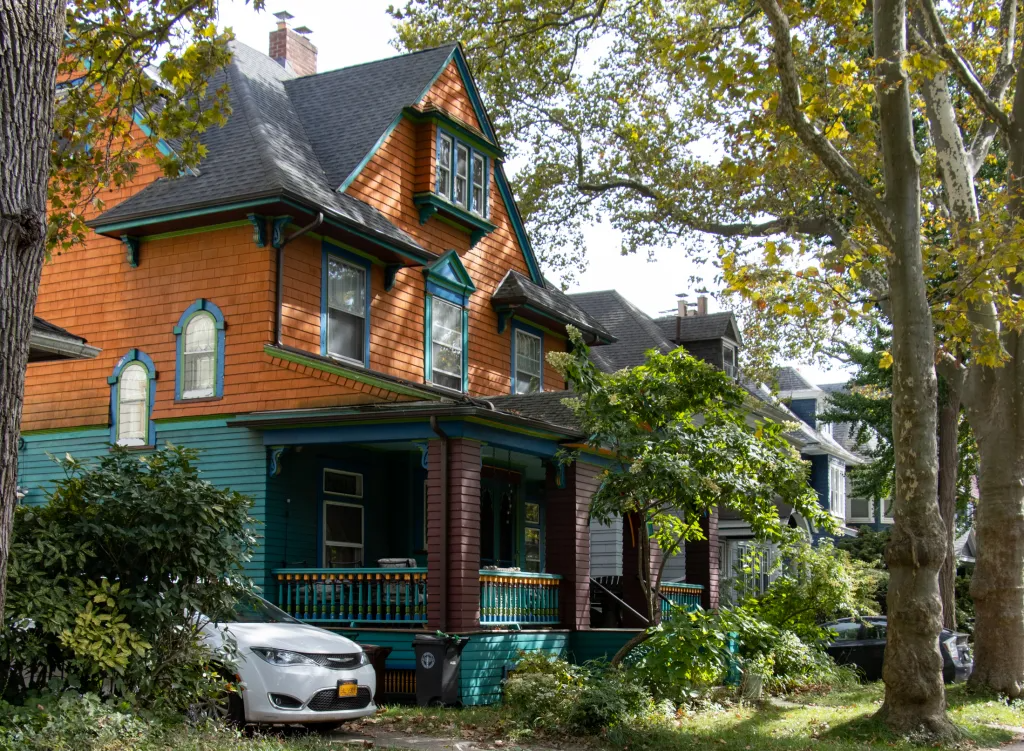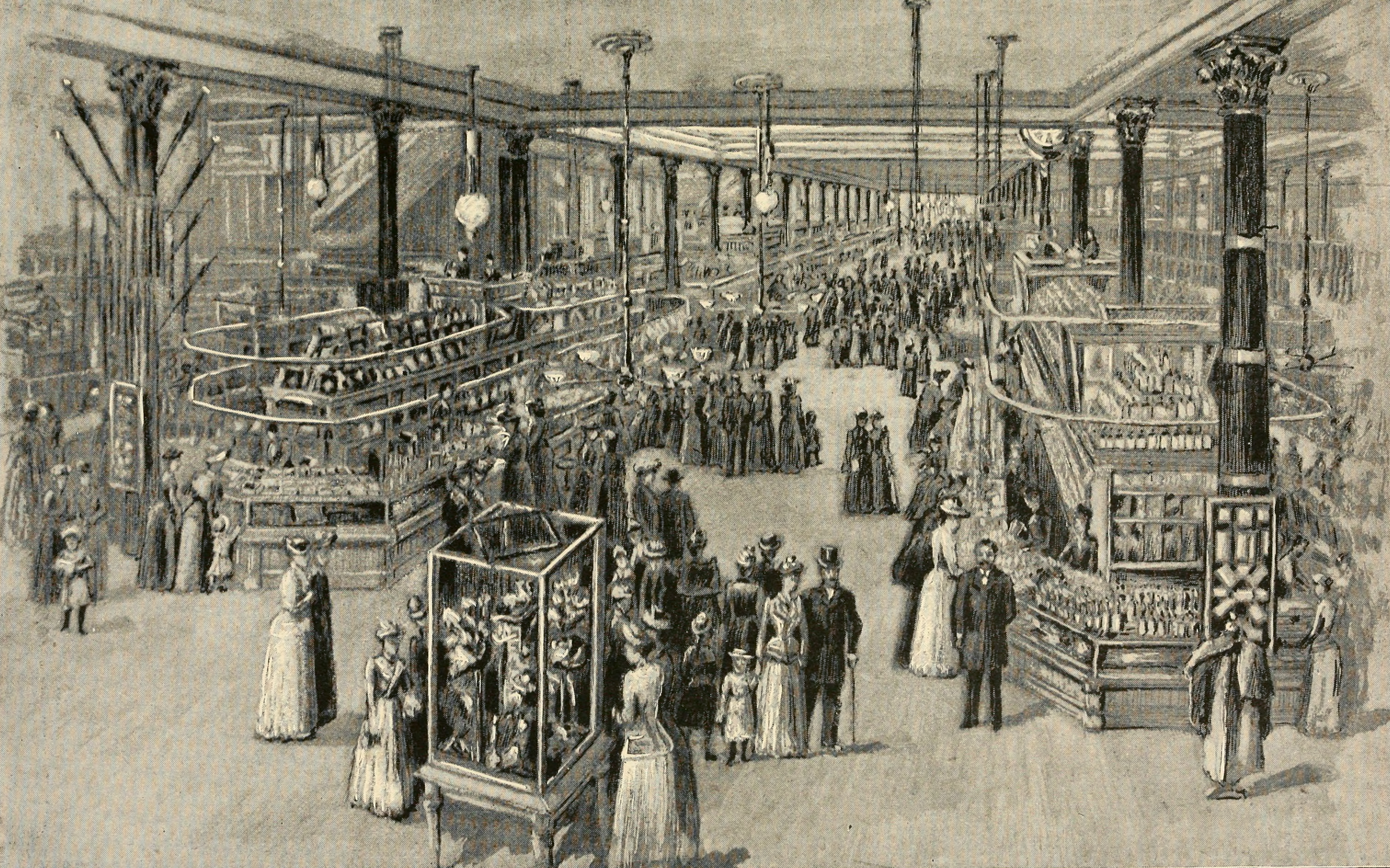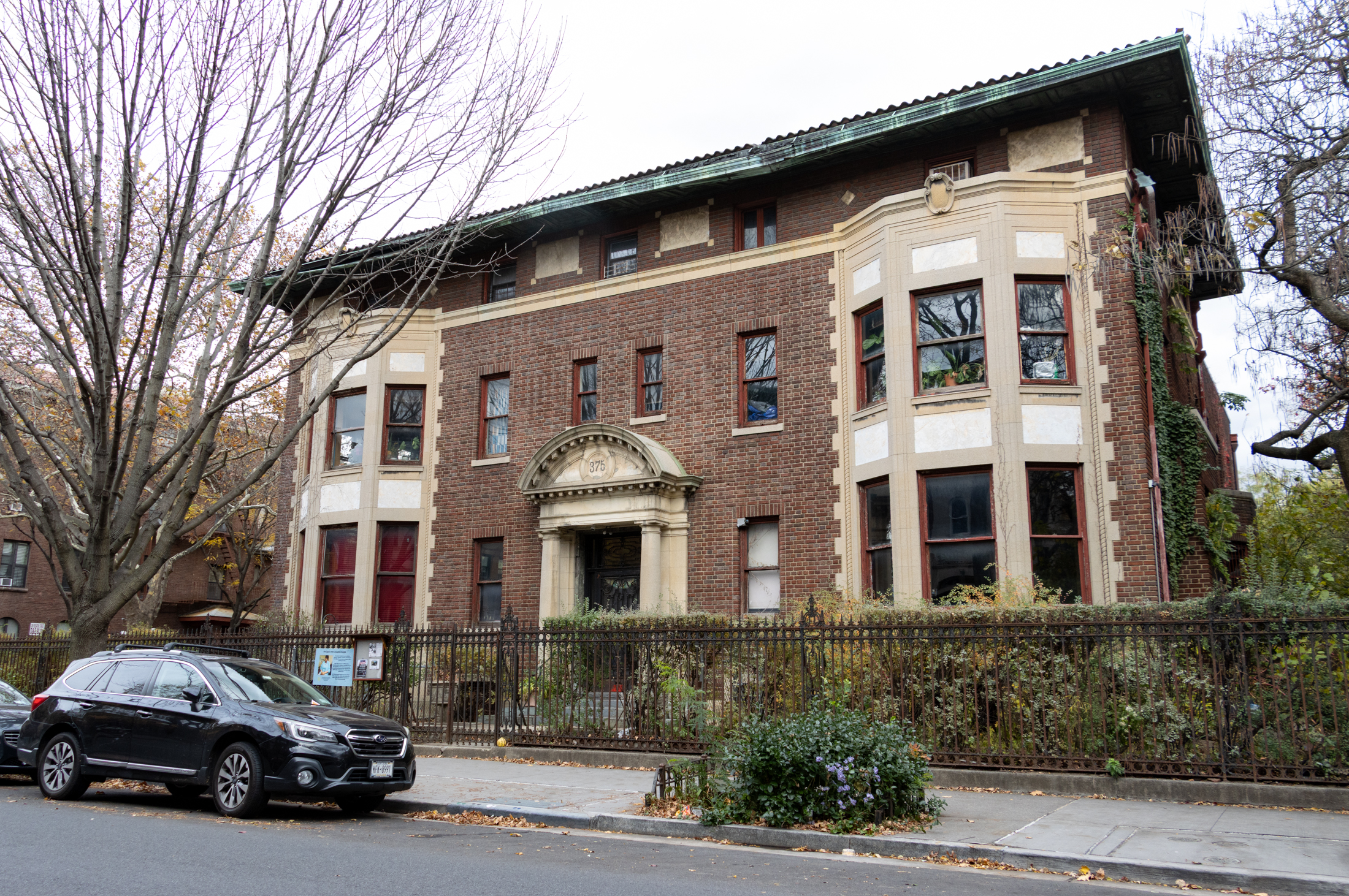House of the Day: 485 4th Street
This unusual-looking house at 485 4th Street in Park Slope hit the market in the last week of the year with an asking price of $2,495,000. The location and exterior are great and there are some preserved details on the interior, but the house has certainly suffered from being cut up into three apartments. Given…


This unusual-looking house at 485 4th Street in Park Slope hit the market in the last week of the year with an asking price of $2,495,000. The location and exterior are great and there are some preserved details on the interior, but the house has certainly suffered from being cut up into three apartments. Given the fact that this will require some dough to turn back into a one- or two-family, the price seems high to us. What about you?
485 4th Street [Corcoran] GMAP P*Shark





A runon metaphor is what you get when you say I’m dq’d using a timeline that includes the latter part of the Tech Bubble. Tech-driven home prices also escaped sustainable fundamentals (although by a fractional amount compared to the housing bubble per se). Housing then was supposed to crash with dot com but the new phase of the bubble (aka ‘Housing Bubble’) kicked the can down the road and made things a lot worse.
Metaphors are underrated.
***Bid half off peak comps***
The key theme in this debate is leverage. It is why a 20x P/E multiple for the S&P 500 is sustainable today when the average is probably in the 10-15x range. Companies have been able to access much more attractive debt over the past 10 years and despite the credit crisis continue to do so. Antidope, if the debt fundamentals return to historic norms, the P/E must fall as well.
For the same reason BHO, I can’t agree with you – historically, banks only lent 3x annual incomes for housing, which clearly has not been the case for the past 10 years (allowing housing prices to increase as a percent of household income). If you can convince me banks will return to that threshold, then I buy your argument, but as long as jumbo loans continue to remain available, your vision is only theoretical. I agree with you that it will happen someday, but that day is far off. You’re right though, just because it hasn’t happened yet does mean the bulls are right, but are you willing to wait 10, 20, 30 years to be proven correct?
“Any one ever hear of mean reversion?”
“La la la la…” – They’re not listening, ecoux.
Wait a minute! I just had an epiphany!
3.7/7.1 = Half Off!
***Bid half off peak comps***
“what does today’s pe really tell you about direction of stocks?”
Nosedive. The S&P has never bottomed out of the single digits.
That said, I don’t think your comment was ammunition for Team Bear. I think bkhabitat missed that you were making a point with information given by CGfan that was assumed to be valid strictly for argument sake about whatever metric they were debating.
***Bid half off peak comps***
bho, that was maybe like a record runon metaphor. i think you got in all your recent talking points.
listen here ecoux, look at the sp500 pe chart and talk to me about mean reversion. are we due for a 40% price chop from today? mean reversion means march stock prices were too darn high.
I live on this block. A one plus floor thru here goes for under $2200.
Bulls need to stop thinking in terms of the last ten years. It’s the kind of myopia that keeps real estate bubbles from fully popping.
In 1996 the ratio of median house cost to median household income in NYC was 3.7. By 2006 it was 7.1.
Any one ever hear of mean reversion?
“Listen” to bkhabitat, ‘dope. Even within those 10 years, prices were known to be 10x annual rent. Probably lower during the bear market of the 90’s which was also unsustainable. Then there’s 3x median household income. Brooklyn and it’s brownstones have all of a sudden (over last 10 years) become something “special” and “different” but not without the EZ credit Ponzi machine. File it under the classic “this time is different” web of deceit.
bkhabitat – The bear market/collapse doesn’t go away because it missed some perceived deadline set by the bulls. How can you say we bears have a point and then turn around and not agree with us because of the unsustainable, real negative rates and reGOVery life support? The government price-fixing is officially scheduled to dissipate by summer although I think it’ll take a little longer for them to cease extending and pretending and stop the bleeding of our children’s fiscal future. Surely, you must have a more elaborate case. If not, come join us.
***Bid half off peak comps***
what is fundamental? 5x, 10x, 15x, or 20x?
it is not so easy to say we’ll revert to a mean and not just bc measuring the mean is difficult in re. look at the sp500. pe ratio is an important *fundamental* right? but what does today’s pe really tell you about direction of stocks? see http://www.multpl.com/ is there an actual number that you think represents a balanced market? i don’t think so. i think the market can be in balance within a very wide band, perhaps anywhere from 15 to 22.5, and that doesn’t even account for the historical mean, which may be actually below that band.
i don’t disagree with your view, btw, but pls don’t misread my comments as an admission of anything. if someone wants to use my post as ammunition for an argument, it still requires them to convince folks that the argument holds water. (i could nitpick and say there’s nothing artificial about the actual low interest rates, but i get your drift that they’d probably be higher if not for govt policies, direct and indirect.)
That’s exactly the point that many of the bears make though antidope – i.e., that what has actually occured in the market for the last 10 years has not adhered to real estate fundamentals, which is precisely the definition of a bubble. As I said, I disagree with the naysayers who think real estate still has another 30% to fall, because I think that the bubble mentality remains (along with artificially low interest rates and a whole mess of other government intervention). Still, the bears do have a point – at some point fundamentals do eventually win out unless there is something so special about the Brooklyn market that creates a different dynamic than fundamentals would suggest.